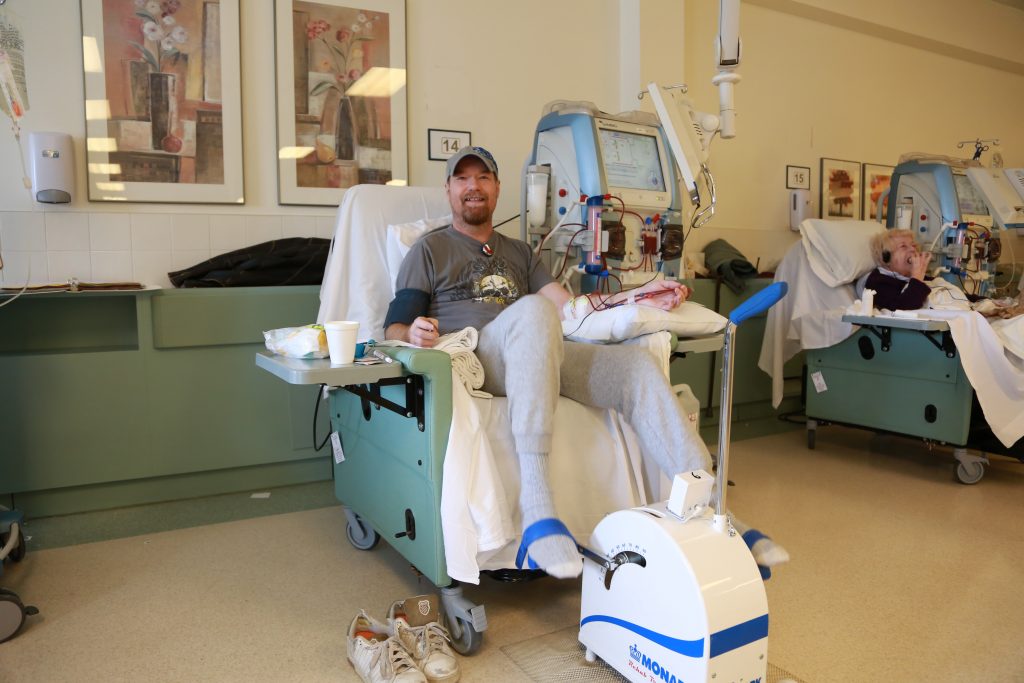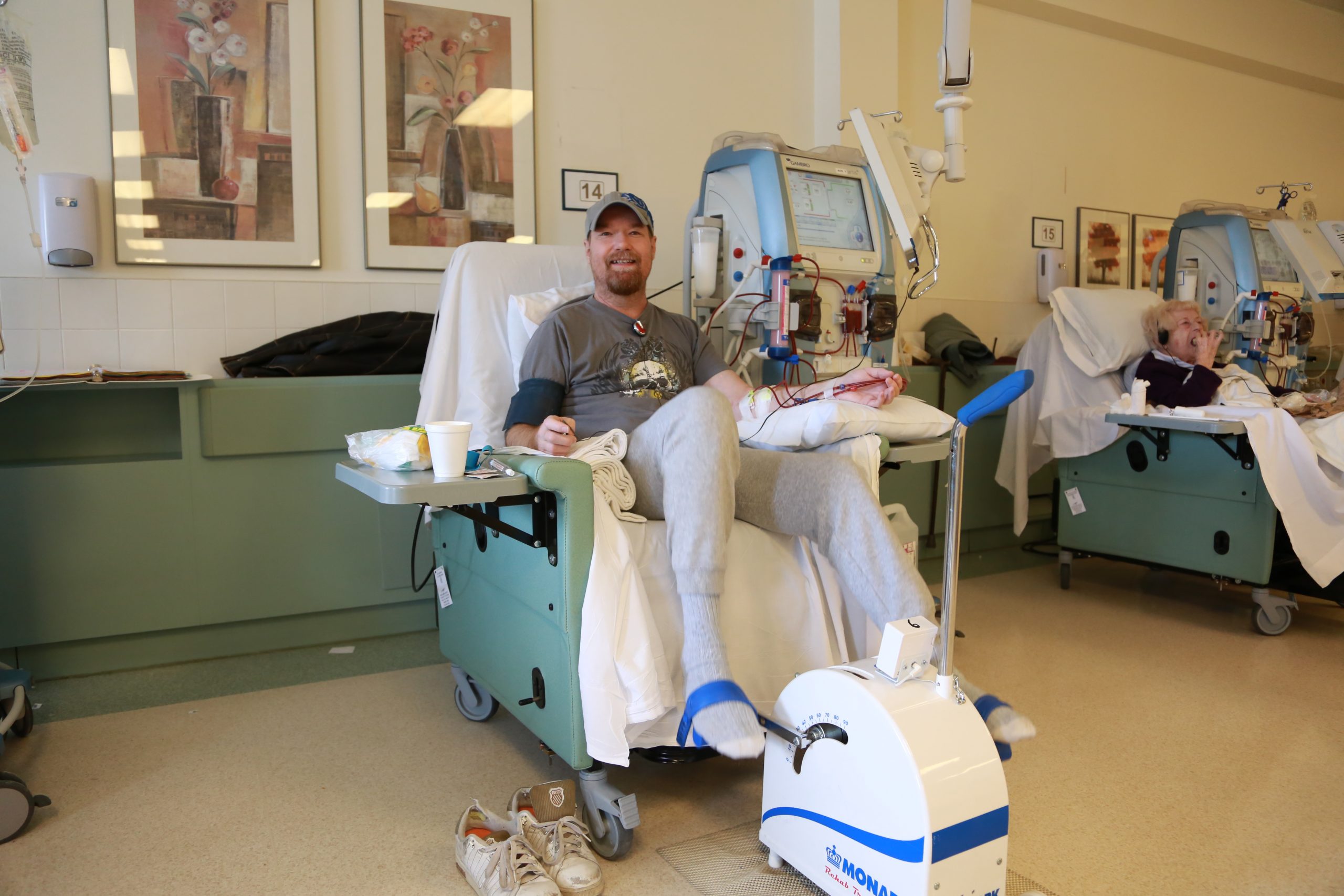Mobile exercise program pushes patients to get moving

Exercise is one of the single most important things we can do to improve our health. Yet so many of us find it difficult to make the time to work out. For people with kidney disease it is even tougher to get moving. Kidneys play an important role in keeping our bodies healthy by removing excess fluid and toxins from our blood, but one in ten Canadians has kidney disease, meaning their kidneys are not functioning at full capacity. One of the common side effects of kidney disease is feeling weak and tired.
Fred, a 46-year old patient, used to head to the skate park after work. On the weekends, he would spin vinyl at local bars as a DJ. Seven years ago, he was diagnosed with end-stage kidney disease and his lifestyle completely changed.
“You really just don’t feel like you have the energy. I’ve tried to go out skateboarding, but I get tired really quickly – it drains you,” he said.

When a person’s kidneys fail they need to start dialysis treatment, where they are connected to a machine that cleans their blood; the process takes between three to four hours and has to be done up to five times a week. For dialysis patients, St. Joe’s can feel like a second home many visit our clinic over 150 times a year for treatment.
As a registered kinesiologist, Naz Gholami recognized the positive impact more frequent exercise could have on our patients, in particular when they were receiving treatment. After successfully piloting an exercise program for dialysis patients over the age of 65, she made the program available to everyone who comes to the Community Renal Centre.
Two times a week, Naz pulls out mobile cycling machines and places them in from of six to eight patients at a time while they are receiving treatment. At first, they grumble about the work, but soon they are cycling, teasing each other about how fast or slow they’re going.
“Many dialysis patients experience reduced mobility so supervised exercise during treatment can safely help improve muscle strength and endurance,” said Naz. “Exercise also helps improve blood flow which can actually help with dialysis.”
For patients the program offers a break from routine, creating a fun and competitive environment which helps pass the time. It’s also innovative; St. Joe’s is one of only three hospitals in the GTA with this offering. Many patients reported improvements to their mood and energy levels within the first few weeks. Those who previously had challenges completing everyday tasks can now go up a flight of stairs without getting winded or go shopping without needing to stop and rest.
“Two weeks after I started dialysis I began to have severe pain in my ankles. My doctor couldn’t explain why I had it, but I limped some days it was so intense,” said Jason, a dialysis patient for the past six years. “A week after I started cycling, the pain subsided—it’s not perfect, but I can walk easily now I can even run.”
Now patients aged 40 to 90, participate in 30-45 minutes of cycling and the use of resistance bands for strength training during their treatment. Naz also manually stretches patients’ limbs to increase flexibility and reduce muscle pain and stiffness.
“The real benefit is the support and encouragement to include exercise in their daily lives – which can be a real challenge when treatment can take up to four hours,” said Naz. “My hope is daily activities get easier—stuff that we mostly take for granted but for our patients requires significant effort.”
Fred already has his sights on a more active future. “Eventually I want to get back to the skate park, but I have to build up my endurance,” he said. “This program really motivates me to keep going, exercise at home even, this summer I want to buy a bicycle and ride with my family— that’s my goal.”
